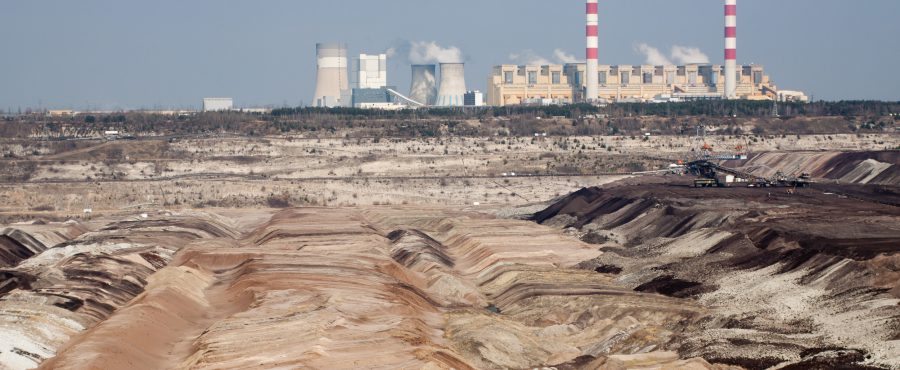
According to the data of the International Energy Agency Poland’s primary source of energy is coal. Brown and black coal generates 50 per cent of all power used in our country. However, the average for IEA member states is 17 per cent. Oil, Poland’s second most popular fuel next to coal, generates 26 per cent of power, while the average for other IEA countries is 36 per cent.
The third most popular fuel is gas, which in Poland produces 15 per cent of power. In other IEA countries the share of gas in their energy mix amounts to 27 per cent.
Black and brown coal is an absolute foundation of Polish energy sector. These fuels generate over 80 per cent of electricity in Poland. Other energy sources are marginal. Gas and biofuels amount to ca. 5 per cent each and wind – to 8 per cent. Thus, one may formulate a thesis that Poland has a coal monocultureI)http://www.iea.org/media/countries/Poland.pdf.
Monoculture under threat
According to IEA forecasts, in 2040, as much as 37 per cent of power in Agency-member states is going to come from renewable sources. However, Poland’s local conditions impair reorientation of the energy sector towards renewable energy.
A strong coal-mining lobby, including trade unions, are able to exert strong pressure on subsequent governments and force decisions, beneficial to the coal industry, because most Polish coal mines generate losses.
Another challenge of the Polish energy sector is the age of the energy sources. About 60 per cent of them is 30 and more years old, which makes it incompliant with or unable to fulfil stricter and stricter standards of harmful substance emission. Old installations have also lower generation efficiency, sometimes as low as 32-33 per cent, while modern coal-based facilities may reach efficiency as high as 49 per centII)https://www.money.pl/gospodarka/wiadomosci/artykul/energetyka-w-polsce-normy-emisji,73,0,2298441.html.
Heating industry in Poland
One of today’s key challenges related to the Polish energy sector is smog. The list of Europe’s 50 most polluted cities contains 33 in PolandIII)https://www.fakt.pl/wydarzenia/polityka/smog-w-polsce-rzad-oglasza-program-walki-ze-smogiem/mhhzgzl. This is a consequence mainly of obsolete heating systems – buildings are very energy-inefficient their owners, to reduce high costs resulting from low efficiency, use fuels of the worst quality.
Despite the building’s high energy consumption, smog in Poland is the consequence of having local, small-range heating plants and heating and power plants in smaller towns. Therefore, one of the most polluted towns is Zakopane, situated in a valley.
Plans for the future
According to the current Energy Policy Plan till 2030IV)http://www.me.gov.pl/files/upload/8134/Polityka%20energetyczna%20ost.pdf, the main development directions of the Polish energy sector include:
- energy efficiency improvement,
- strengthening of security of fuel and energy deliveries,
- diversification of electrical energy generation structure by introducing nuclear energy,
- development of use of RES, including biofuels,
- development of competitive markets of fuels and energy,
- limitation of energy’s impact on the environment.
These plans indicate that though the role of coal-based energy in Poland is key, within the forthcoming years its importance will gradually be diminished. Coal in the heating of households and large-scale heating networks is going to be pushed off by gas, generation of power from RES and biofuels is to be growing. The government is also planning to construct a nuclear power plant, though these plans have not yet entered the stage of binding decisions, including political ones.
| I. | ↑ | http://www.iea.org/media/countries/Poland.pdf |
| II. | ↑ | https://www.money.pl/gospodarka/wiadomosci/artykul/energetyka-w-polsce-normy-emisji,73,0,2298441.html |
| III. | ↑ | https://www.fakt.pl/wydarzenia/polityka/smog-w-polsce-rzad-oglasza-program-walki-ze-smogiem/mhhzgzl |
| IV. | ↑ | http://www.me.gov.pl/files/upload/8134/Polityka%20energetyczna%20ost.pdf |




